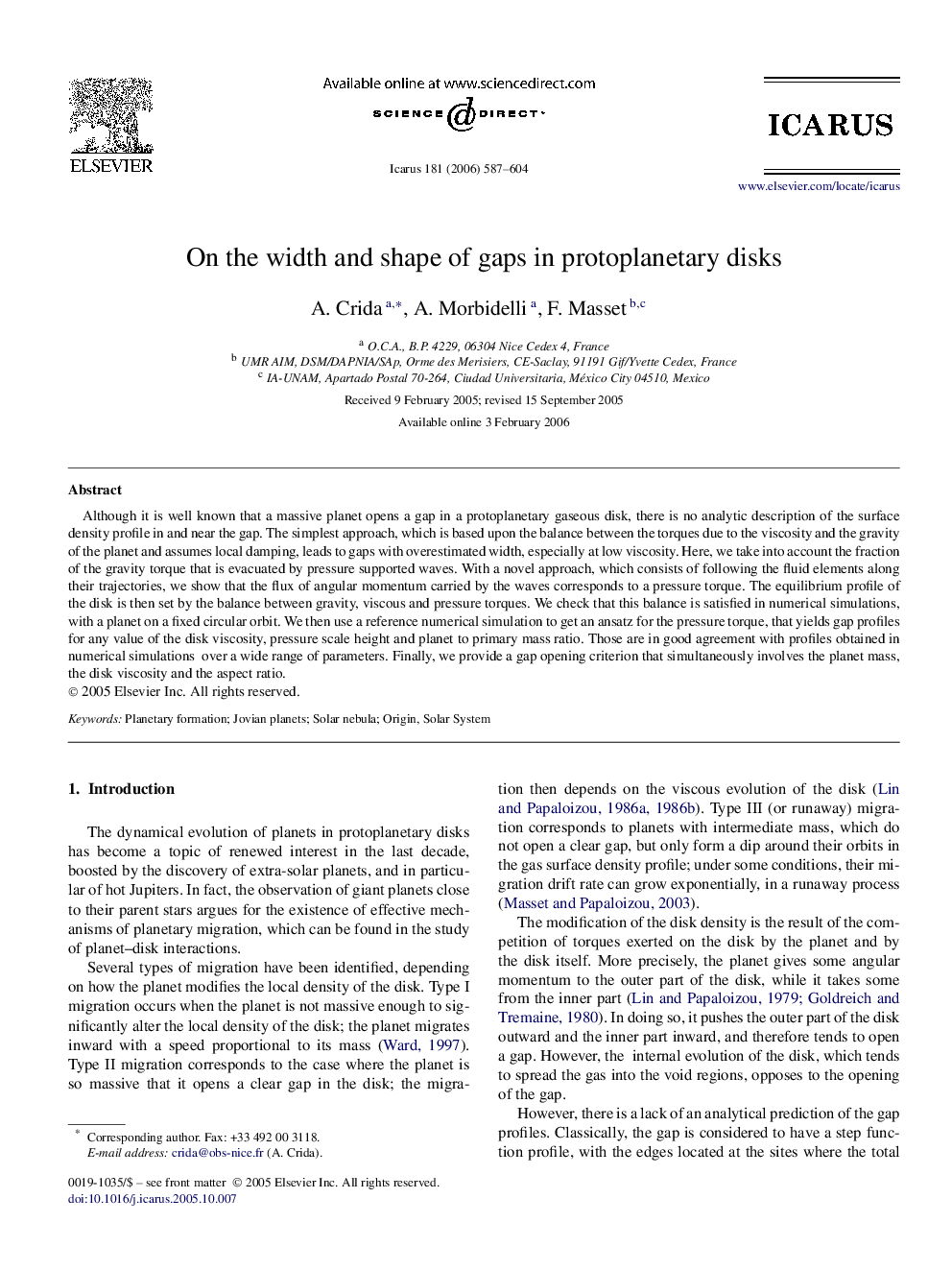| Article ID | Journal | Published Year | Pages | File Type |
|---|---|---|---|---|
| 1775834 | Icarus | 2006 | 18 Pages |
Although it is well known that a massive planet opens a gap in a protoplanetary gaseous disk, there is no analytic description of the surface density profile in and near the gap. The simplest approach, which is based upon the balance between the torques due to the viscosity and the gravity of the planet and assumes local damping, leads to gaps with overestimated width, especially at low viscosity. Here, we take into account the fraction of the gravity torque that is evacuated by pressure supported waves. With a novel approach, which consists of following the fluid elements along their trajectories, we show that the flux of angular momentum carried by the waves corresponds to a pressure torque. The equilibrium profile of the disk is then set by the balance between gravity, viscous and pressure torques. We check that this balance is satisfied in numerical simulations, with a planet on a fixed circular orbit. We then use a reference numerical simulation to get an ansatz for the pressure torque, that yields gap profiles for any value of the disk viscosity, pressure scale height and planet to primary mass ratio. Those are in good agreement with profiles obtained in numerical simulations over a wide range of parameters. Finally, we provide a gap opening criterion that simultaneously involves the planet mass, the disk viscosity and the aspect ratio.
